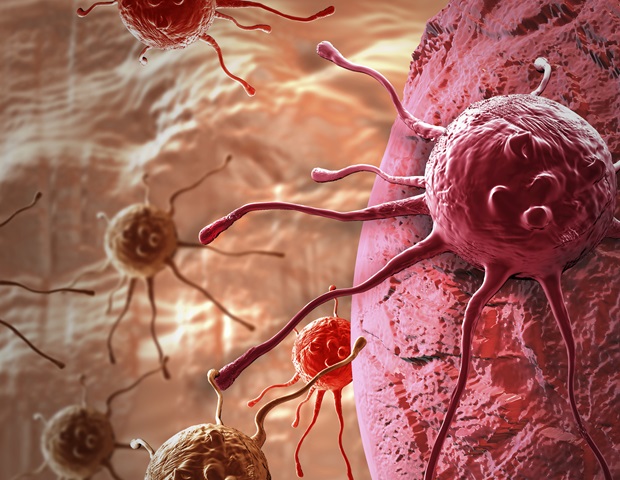A new artificial intelligence-powered tool called MISO (Multi-modal Spatial Omics) can detect cell-level characteristics of cancer by looking at data from extremely small pieces of tissue-some as small as 400 square micrometers, equivalent to the width of five human hairs. Constructed by researchers at the Perelman School of Medicine at the University of Pennsylvania, the tool analyzes reams of data and can apply insights to even the smallest spots on medical imaging. It could guide doctors to the individual therapies that work best for a variety of cancers, according to a new paper detailing MISO that was published today in Nature Methods.
Using MISO, the researchers discovered new information about a variety of different cancers using data and imaging from donated patient tissue, including:
- Bladder cancer: MISO detected a specialized group of cells responsible for forming tertiary lymphoid structures, which are linked to improved responses to immunotherapy
- Gastric cancer: MISO distinguished between cancer cells and the mucosa inside of tissue
- Colorectal cancer: MISO identified different sub-classes of cancer cells that helped shine a light on the different malignant cells that make up even a single tumor
Additionally, MISO was used to analyze the structures of non-cancerous brain tissues.
All of these accomplishments can guide better therapies, increase survival, and are very difficult, if not impossible, to do without a massively powerful AI tool like MISO.
MISO was developed to work in “spatial multi-omics,” a field of study in which researchers attempt to gain insight on different conditions through considering the physical layout of tissue by looking at different “-omics” modalities, like transcriptomics (study of gene expression), proteomics (proteins), and metabolomics (metabolites and their processes), among others.
“As the field of spatial omics advances, it has become possible to measure multiple -omics modalities from the same tissue slice, providing complementary information and offering a more comprehensive, insightful view,” said Mingyao Li, PhD, the study’s senior author and a professor of Biostatistics and Digital Pathology.
MISO addresses a huge data challenge by enabling simultaneous analysis of all spatial -omics modalities, as well as microscopic anatomy images when available. It is the only method that is able to handle datasets like these with hundreds of thousands of cells per sample.”
Mingyao Li, PhD, Professor, Biostatistics and Digital Pathology, University of Pennsylvania
When using spatial transcriptomics to look at an image, a single pixel in a single image contains 20,000 to 30,000 data points to be analyzed through the lens of -omics, and that number can double and triple if multiple -omics are being considered. MRI and CT scans have just one data point (shades of gray) per pixel to interpret. Without some type of artificial intelligence tool to assist them, doctors and researchers examining medical images would almost never be able to pick up on some of the insights that MISO can.
The latest effort in -omics image tech
MISO continues Li’s work in developing artificial intelligence imaging techniques capable of seeing what even trained humans can’t. Earlier this year, her team released a paper examining iSTAR, a tool that surveys genomics, and found traces of cancer-and the body’s response to treatments for it-that would have otherwise gone unnoticed.
While MISO looks at a much wider range of data than iSTAR-some components of which were even used to develop MISO-Li envisions them both being useful, but in different areas. iSTAR is useful for increasing the sharpness of imaging and virtually generating spatial-omic data that MISO could then analyze, while MISO supports insight into finer subjects (such as detecting high-endothelial venules, a special group of cells that recruit white blood cells to specific tissues).
Moving forward, the team hopes to gather everything they’ve learned about spatial -omics and pathology imaging and improve MISO so that it could simultaneously analyze multiple tissue samples at once, exponentially increasing its findings output.
Some data-like epigenetic marks (chemicals that regulate DNA but are influenced by the environment, not purely genetics)-has yet to be measured in large-scale ways, but MISO’s AI system allows it to “learn” as it processes information, making it so that it could recognize this data as it becomes more available. “I anticipate that integrating these diverse data types will enable MISO to provide deeper insights into various aspects of cellular behavior,” Li said.
Source:
Source link : News-Medica

